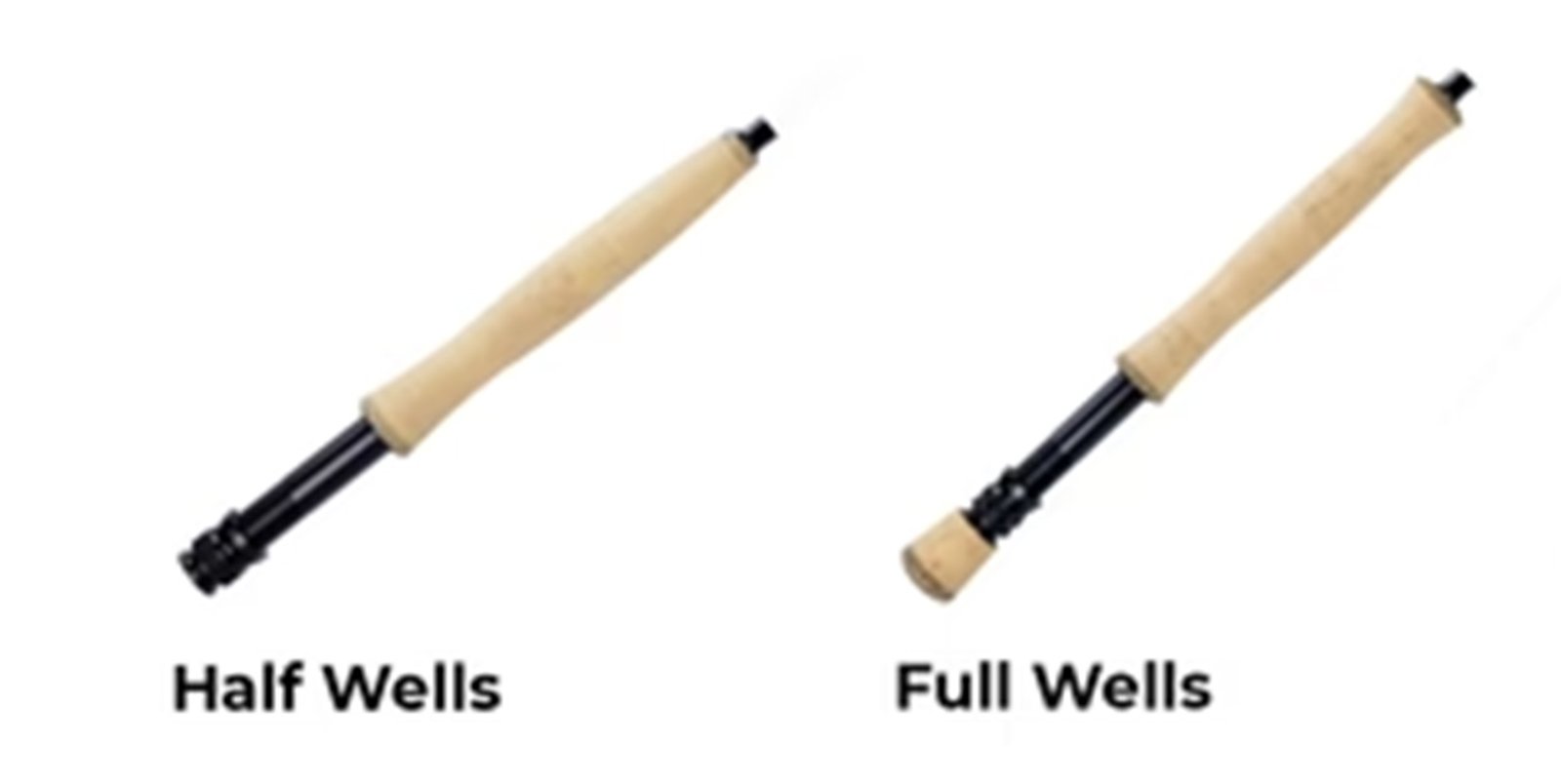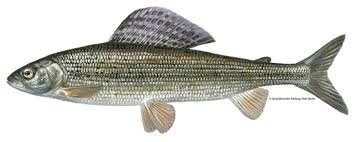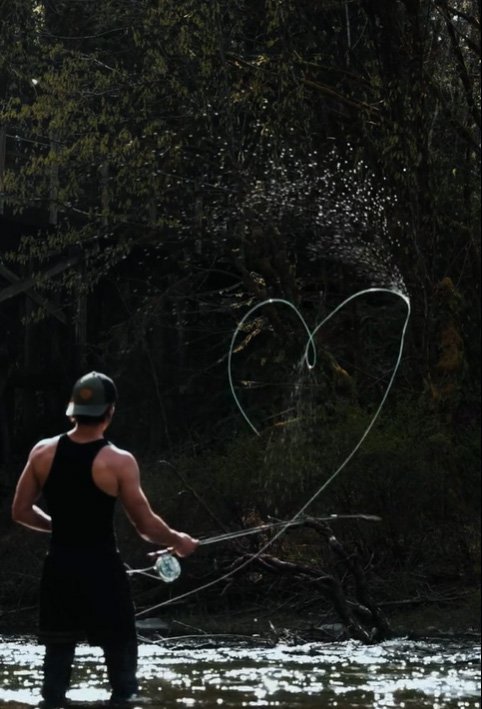Choosing the Perfect Fly Fishing Rod
Selecting the right fly fishing rod is essential for both success and enjoyment when fishing for trout. With the wide variety of options available, it’s important to understand how different factors such as rod length, action, line weight, handle types, and fittings impact your fishing experience. This guide aims to provide detailed insights to help you make an informed decision.
Fly Rod Length: Finding the Perfect Balance
The length of your fly rod plays a crucial role in determining its suitability for different fishing environments and techniques:
Small Streams and Rivers
- Shorter Rods (7 to 8.5 feet): Ideal for fishing in confined spaces where casting distance isn’t a priority. These rods offer excellent maneuverability and precision, making them perfect for navigating around bankside vegetation and other obstacles. They are also easier to handle when casting under overhanging trees or in tight quarters.
Larger Rivers and Stillwaters
- Standard Rods (9 feet): Versatile and commonly used in the UK. These rods provide a balance between reach and control, making them suitable for both river and stillwater fishing. They allow for longer casts and better line mending, which is essential for controlling the drift of your fly.
Stillwaters and Boat Fishing
- Longer Rods (9 to 10 feet): Favored for stillwater fishing, especially from a boat. The extra length helps with longer casts, better line control, and efficient line mending. This is crucial when fishing in larger bodies of water where you need to cover more area and control your fly’s movement more precisely.
Specialized Techniques
- Extra Long Rods (11 feet or more): These rods are typically used for nymphing techniques in flowing water. The additional length provides extra reach, allowing you to keep more line off the water and achieve better drifts. They also help in controlling the depth and movement of your nymphs.
Fly Rod Action: Matching Your Casting Style and Fishing Needs
The action of a fly rod refers to how it flexes and recovers during casting and playing fish. Different actions are suited to various fishing styles and conditions:
Fast Action (Tip-Flex)
- Characteristics: Stiff with quick recovery, bending mostly at the tip.
- Advantages: Offers powerful and accurate long-distance casts, making it suitable for windy conditions and casting larger flies or heavy sinking lines.
- Best For: Stillwater trout anglers who need to cast teams of flies at a distance, or in conditions where wind resistance is a factor.
Medium Action (Mid-Flex)
- Characteristics: Bends in the middle, offering a balance between stiffness and flexibility.
- Advantages: Versatile for different casting distances and fly sizes, providing a good combination of power and delicacy.
- Best For: Anglers who fish in both stillwaters and rivers, especially when a more delicate presentation is required, such as with dry flies or smaller nymphs.
Slow Action (Full-Flex)
- Characteristics: Bends throughout the rod, providing a smooth, deep flex.
- Advantages: Excellent for delicate presentations with small dry flies and light tippets, cushioning the shock of a fish taking the fly.
- Best For: Fishing in calm waters where subtlety is key, and precise, gentle presentations are necessary.

Line Weight: The Backbone of Your Rod
Choosing the appropriate line weight is crucial for optimizing your fly rod’s performance. The line weight you select should match the fishing style, water conditions, and the size of flies you plan to use:
Light Line Weights (#3-#4)
- Use: Best for small streams and rivers where delicate presentations are required.
- Advantages: Allows for precise casts with smaller flies and provides accurate presentations.
- Considerations: May struggle in windy conditions due to lighter mass.
Moderate Line Weights (#5-#6)
- Use: Versatile for both rivers and stillwaters, ideal for dry flies and smaller nymphs.
- Advantages: Balances finesse with casting distance, accuracy, and presentation.
- Considerations: A popular choice for a variety of conditions, offering good performance across different scenarios.
Heavy Line Weights (#7-#8)
- Use: Common for stillwater fishing, especially from a boat or in windy conditions.
- Advantages: Provides excellent casting distance and can handle larger flies or multiple fly rigs. Works well with a range of line densities from floating to fast sinking.
- Considerations: Heavier line weights help combat wind and cover larger bodies of water effectively.
Fly Rod Handle Types: Comfort and Control
The handle of your fly rod impacts both comfort and casting efficiency. Most handles are made from cork, but some may feature EVA grips or a mix of both:
Half-Wells Handles
- Design: Tapered with a comfortable grip.
- Best For: Smaller, lighter rods. Ideal for accurate, delicate casting styles typically used with lighter line weights.
Full-Wells Handles
- Design: Flared end providing a firm grip.
- Best For: Higher line weight rods. Perfect for making long, powerful casts, especially with heavier flies or in windy conditions.

Fly Rod Fittings: Built for Durability
Quality fittings are essential for the longevity and performance of your fly rod. Focus on the reel seat and guides:
Reel Seat
- Material: Look for durable materials like aluminium or graphite.
- Function: Should securely hold your reel without any wobbling, ensuring a stable connection between the rod and reel.
Guides
- Types: Single-leg guides, snake guides, and stripper guides.
- Single-Leg Guides: Lightweight and commonly found on modern fly rods, offering smooth line flow and increased sensitivity.
- Snake Guides: Durable and well-suited for heavier rods, reducing line friction and facilitating longer casts.
- Stripper Guides: The largest guides, found at the base of the rod. They ensure smooth line passage and prevent tangles, crucial for handling heavier line weights and shooting heads.
Making Your Decision
Choosing the right fly rod involves considering various factors based on your fishing style and the environments you’ll encounter. Here’s a summary of popular rod length and line weight combinations:
- 8’ #4: Ideal for small streams and rivers, using small, light flies.
- 9’ #5: Versatile for rivers and small stillwaters, perfect for dry flies and smaller nymphs.
- 9’ #6: Suitable for larger stillwaters, handling smaller flies and floating/intermediate lines.
- 10’ #7: Perfect for stillwater fishing with a variety of flies and line densities, offering excellent casting distance and handling in windy conditions.
Conclusion
Selecting the perfect fly fishing rod for trout involves balancing factors such as rod length, action, line weight, handle type, and fittings. By understanding these elements and how they interact with your fishing style and conditions, you can make an informed decision that enhances your fishing experience and increases your chances of success. Enjoy your time on the water and tight lines!




